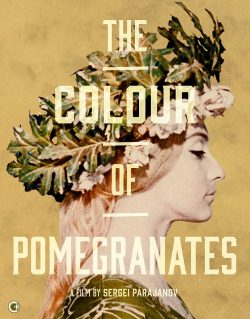Armenian Culture on the Silver Screen: From “The Color of Pomegranates” to the Impact on Global Cinema
Armenian culture has played an important role in the world of cinema, both in terms of subject matter and the contributions of Armenian filmmakers. From the depiction of Armenian history and culture on screen to the impact of Armenian filmmakers on the global film industry, the Armenian influence in cinema is significant, perhaps even more than the bonuses on NationalCasino Сanada.
Introduction to Armenian Culture on the Silver Screen
Armenia, a small country in the South Caucasus region of Eurasia, has a rich cultural heritage that dates back thousands of years. The country’s art, music, literature, and architecture have all been influenced by its location at the crossroads of Europe and Asia, as well as its complex history of occupation and diaspora. In recent decades, Armenia has also made a name for itself in the world of cinema, with filmmakers who have gained international recognition for their unique perspectives and styles.
 The Color of Pomegranates: A Classic Example of Armenian Cultural Expression in Film
The Color of Pomegranates: A Classic Example of Armenian Cultural Expression in Film
One of the most notable examples of Armenian culture on the silver screen is the 1969 film “The Color of Pomegranates” by Armenian director Sergei Parajanov. The film is a poetic, visually stunning portrayal of the life and art of Armenian poet and musician Sayat-Nova, set against the backdrop of 18th-century Armenia. Parajanov’s use of symbolic imagery and non-linear narrative techniques has made “The Color of Pomegranates” a classic of world cinema and a landmark of Armenian cultural expression on the screen.
The Promise: Depicting the Armenian Genocide and the Contributions of the Armenian Diaspora
Another example of Armenian cultural representation in cinema is the 2016 film “The Promise” by director Terry George. The film tells the story of a love triangle set against the backdrop of the Armenian Genocide, in which an estimated 1.5 million Armenians were killed by Ottoman forces during World War I. “The Promise” was notable not only for its depiction of a historical event that is still not widely recognized, but also for its use of Armenian actors and crew members, many of whom have roots in the Armenian diaspora.
The Influence of Armenian Culture on Filmmakers Around the World
Armenian culture has also had an impact on the global film industry through the contributions of Armenian filmmakers. One of the most famous of these is Atom Egoyan, a Canadian filmmaker of Armenian descent who has directed such films as “The Sweet Hereafter” and “Ararat.” Egoyan’s work often deals with themes of identity, memory, and the complexities of personal and collective history. His films have received critical acclaim and have been recognized with numerous awards, including the Grand Prix at the Cannes Film Festival.
Another notable Armenian filmmaker is Rouben Mamoulian, who was one of the pioneers of sound and color in Hollywood. Mamoulian directed some of the most influential films of the 1930s, including “Applause,” “Love Me Tonight,” and “Queen Christina.” His innovative use of camera movement and editing techniques helped to establish a new style of filmmaking that would influence generations of directors to come.
Armenian culture has also influenced the work of other filmmakers outside of Armenia. For example, the American filmmaker Martin Scorsese has cited Sergei Parajanov’s “The Color of Pomegranates” as a major influence on his own work, particularly his use of visual storytelling and music in films like “Goodfellas” and “The Last Temptation of Christ.” Similarly, the French filmmaker Jean-Luc Godard has spoken of his admiration for Rouben Mamoulian’s use of sound in “Love Me Tonight.”
Armenian Culture in Literature and Music
In addition to its impact on cinema, Armenian culture has also been represented in other forms of media, such as literature and music. Armenian-American author William Saroyan, for example, wrote many novels, short stories, and plays that depicted life in Armenia and the experiences of Armenian immigrants in the United States. Similarly, Armenian music has a long history that spans traditional folk songs, classical compositions, and contemporary pop and rock music.











